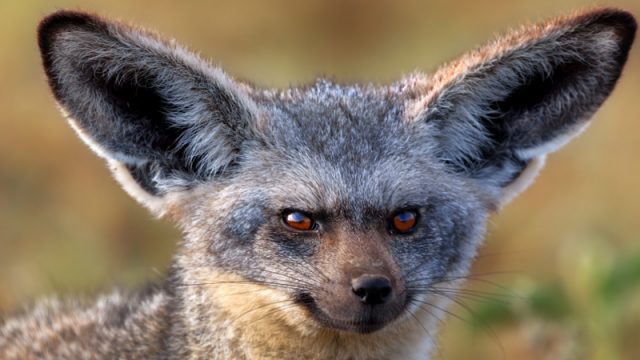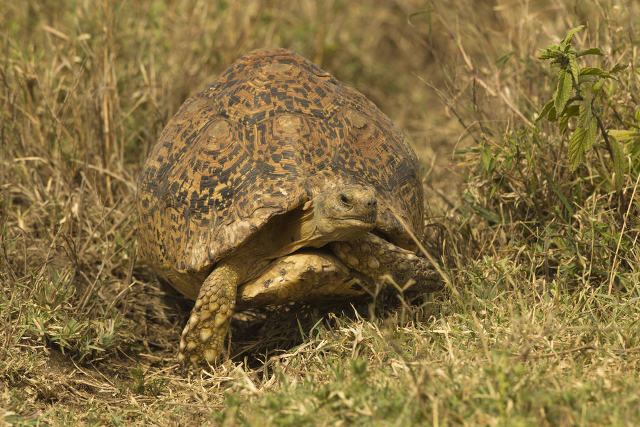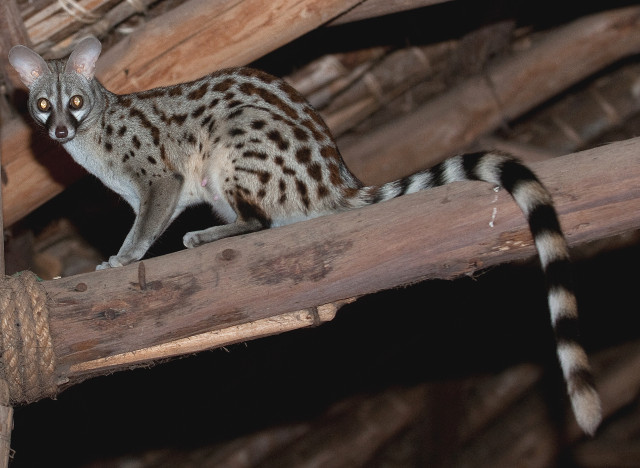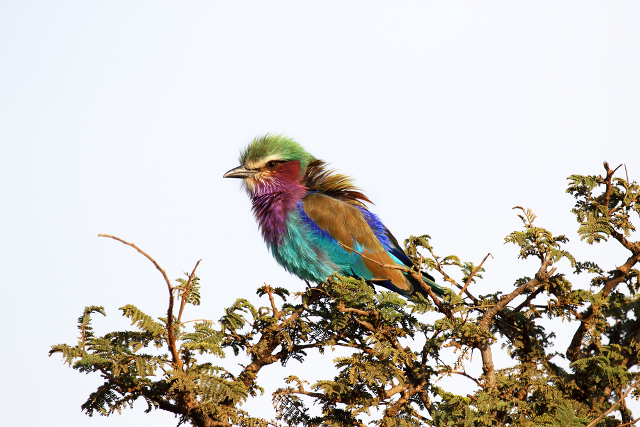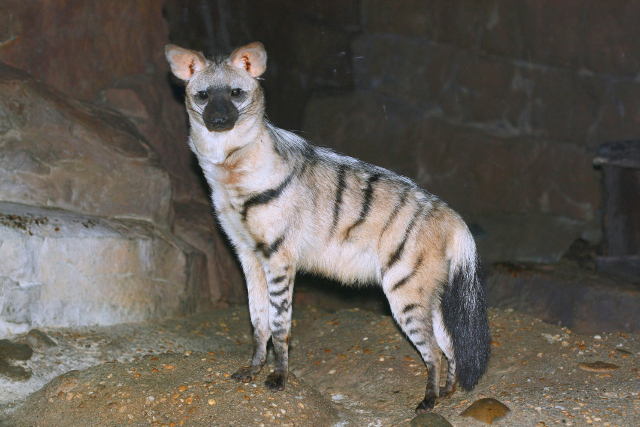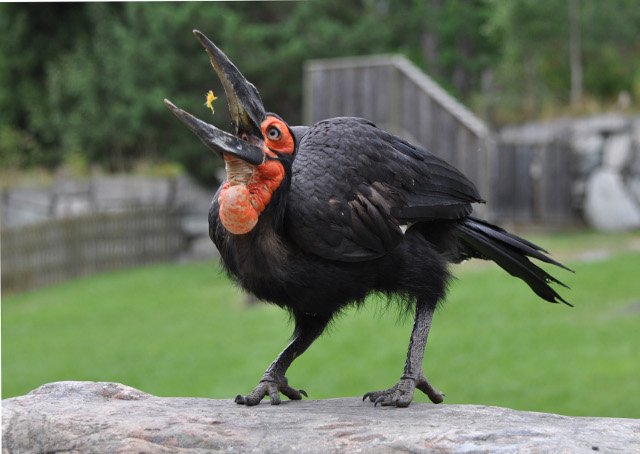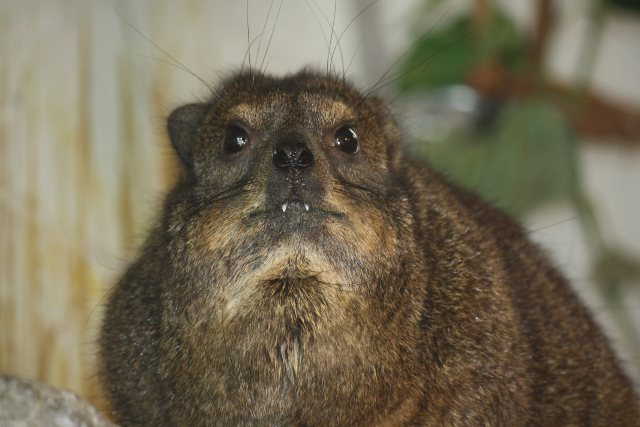The Serengeti is well known as the home turf of favorite safari animals such as rhinos and lions, but this abundant African eco-system is also replete with unusual creatures. Quite a few of them are nocturnal or on endangered species lists, so getting a glimpse of them can be difficult. Here are 10 creatures that can be spotted on the savanna with a little luck and effort, from the colorful and cute, to the giant and grotesque.
Shutterstock
1. Red-Headed Agama Lizard
These rainbow-hued creatures can be found sunbathing or climbing on rocks during the day throughout the Serengeti. The colorful markings on their heads are normally seen during the height of mating season. The male lizards do push-ups during mating season in an effort to impress and attract females.
2. Leopard Tortoise
The leopard tortoise, which can live to to the ripe old age of 100, has a clever camouflage shell that keeps it well hidden when it’s out and about. But it tends to hide in the abandoned dens of anteaters or foxes, which makes it a bit hard to spot in the Serengeti. This particular species is the fourth-largest in the world and can weigh up to 120 pounds. The leopard tortoise is not only found in the Serengeti, but can be also be found throughout sub-Saharan Africa, with the exception of West Africa.
3. Bat-Eared Fox
Obviously named for their large bat-like ears, this particular fox is also referred to as the big-eared fox, and the black-eared fox. This breed likes to roam in the short grass lands of the Serengeti and create their own dens by digging to hide from the occasional extreme temperatures experienced in the park. There is no need to fear them if you see one, as they are primarily insectivores and help to consume creepy crawlies humans are scared of, such as ants, spiders, scorpions, and millipedes.
4. Kirk’s Dik-dik
Kirk’s Dik-dik is a breed of dwarf antelope that reaches a maximum weight of just 15 pounds when fully grown, making it one of the smallest of the antelope species. Unlike other savannah animals, Dik-diks do not need to drink from watering holes (which exposes them to potential predators), as they can completely subsist off of the moisture from fruits and leaves. They tend to congregate in areas that have low-lying plants where they can take cover, and at the same time access their food sources. This species is thought to be monogamous, spending more than half of their time with their partners.
5. Genet
Although the genet is related to the house cat, it is more closely related to the mongoose and is an old world mammal. Genets tend to thrive in the rocky areas and shrublands of the Serengeti, and like Kirk’s Dik-dik, can live far from water sources. Sometimes the sound of their hiccuping can be heard if one is nearby. No, it’s not indigestion, but rather the critter’s friendly way of attracting a mate. In late antiquity, the genet was kept as a pet and used to control the local mice population.
6. Dwarf Mongoose
Being tiny doesn’t mean this little guy won’t bite; in fact the dwarf mongoose happens to be the smallest carnivore in not only the Serengeti, but all of Africa. It is only about the size of a squirrel and tends to travel in packs in order to avoid being eaten by predators. Oddly enough, it is known to forage for termites with the the Bush Hornbill, whose cousin the Southern Ground Hornbill made this list in the number 9 slot.
7. Lilac-Breasted Roller
These colorful creatures with spiky green plumage are widely found throughout Africa and are inclined to congregate in areas like the Serengeti that have ample amounts of savanna. Unlike many other bird species, both male and female rollers have the same coloration, making them somewhat indistinguishable. Rollers tend to stick with grasshoppers and beetles for their main dietary needs, but sometimes will pick up the occasional lizard. Like Kirk’s Dik-dik, these birds tend to be fairly monogamous and territorial, and make a loud squawk that sounds like “zaaaaaak” if predators approach.
8. Aardwolf
Not to be confused with the more commonly known aardvark, who also happens to reside in Serengeti National Park, this creature happens to have one of the coolest names in the animal kingdom. Despite the strange sci-fi name, the aardwolf is neither related to the aardvark or the wolf, but is actually related to the hyena family. Though considered a carnivore, meals of flesh come few and far between, so instead the aardwolf gorges itself on lesser creatures such as termites, sometimes eating as many as 200,000 in a single night.
9. Southern Ground Hornbill
This funny-looking bird is the largest species of hornbill in the world and checks in at up to 13 pounds. The patches of red around its eyes are thought to keep dust out during the dry season of the Serengeti. With its large beak, this bird makes a loud call that can be heard almost two miles away. This allows groups of them to maintain a territory 40 sq mi wide. Unfortunately, the hornbill can be hard to spot and is currently listed in most places as critically endangered.
10. Rock Hyrax
We saved the ugliest for last. The rock hyrax is not blessed in the looks department, sporting small vampire-like teeth and long hairs protruding from its eyebrows. Also known as the rock badger or rock rabbit, this goofy guy is very noisy and lives in egalitarian social groups where individuals help each other gather food and defend from predators. It can be seen hanging out in the sun during the day, as it spends around 95% of its time resting.
Related content on AFKTravel:
Our Favorite #Instagram Photos From This Week In The Serengeti
10 Amazing Animals of The Serengeti
Beyond The Serengeti: 10 Lesser-Known National Parks In Tanzania
Want to discover the finer side of Africa? Sign up for our weekly newsletter.
